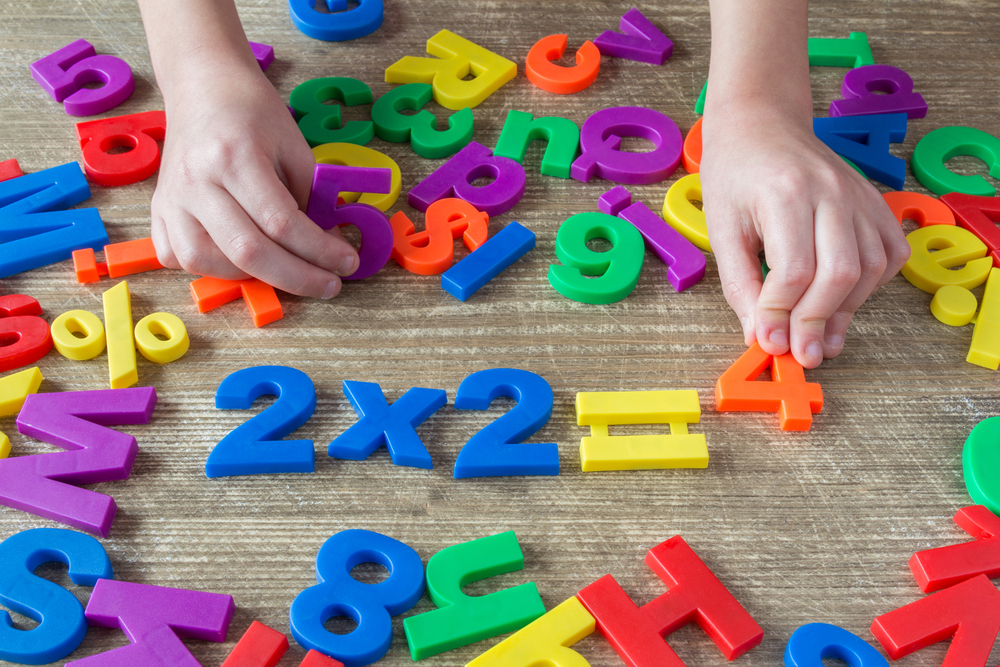Understanding tally marks Numbers Worksheets for 7-Year-Olds
5 filtered results
-
From - To
Introduce your young learner to the basics of counting with our "Understanding Tally Marks Numbers Worksheets for 7-Year-Olds." These engaging worksheets are focused on helping children grasp the concept of tally marks, an essential skill in early math development. Through fun activities and practical exercises, kids will learn to organize and count objects by grouping them into sets of five using tally marks. Perfect for young learners who are just beginning to explore numbers, these worksheets simplify counting and make math enjoyable. Give your child the tools they need to build a strong numerical foundation with our easy-to-understand tally marks worksheets.


Bugs Tally Worksheet
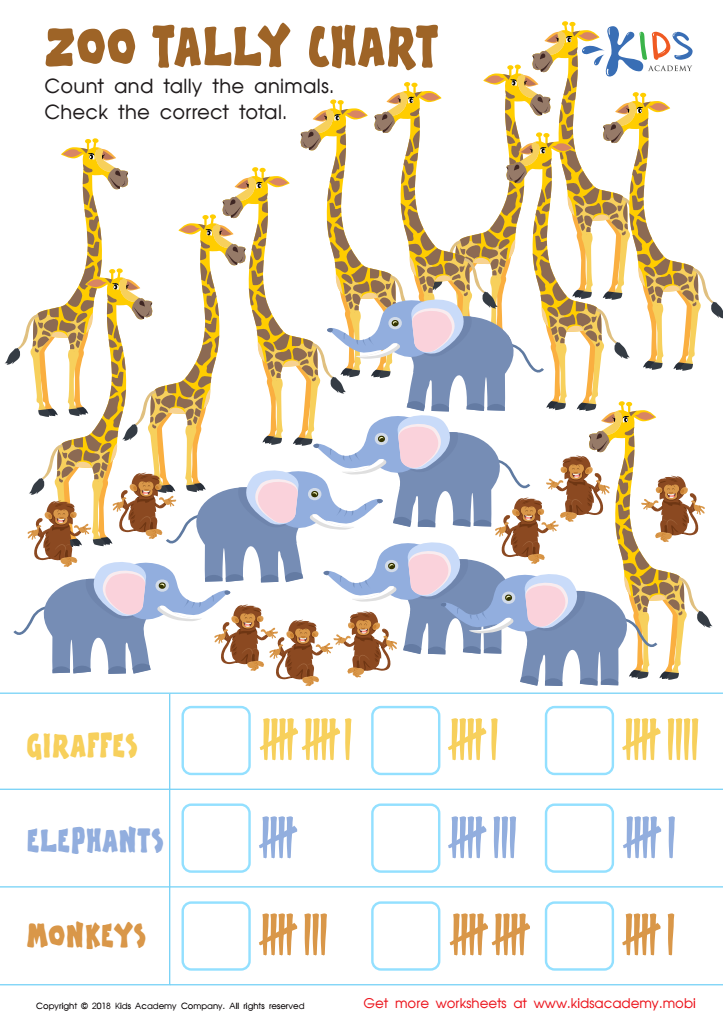

Zoo Tally Chart Worksheet
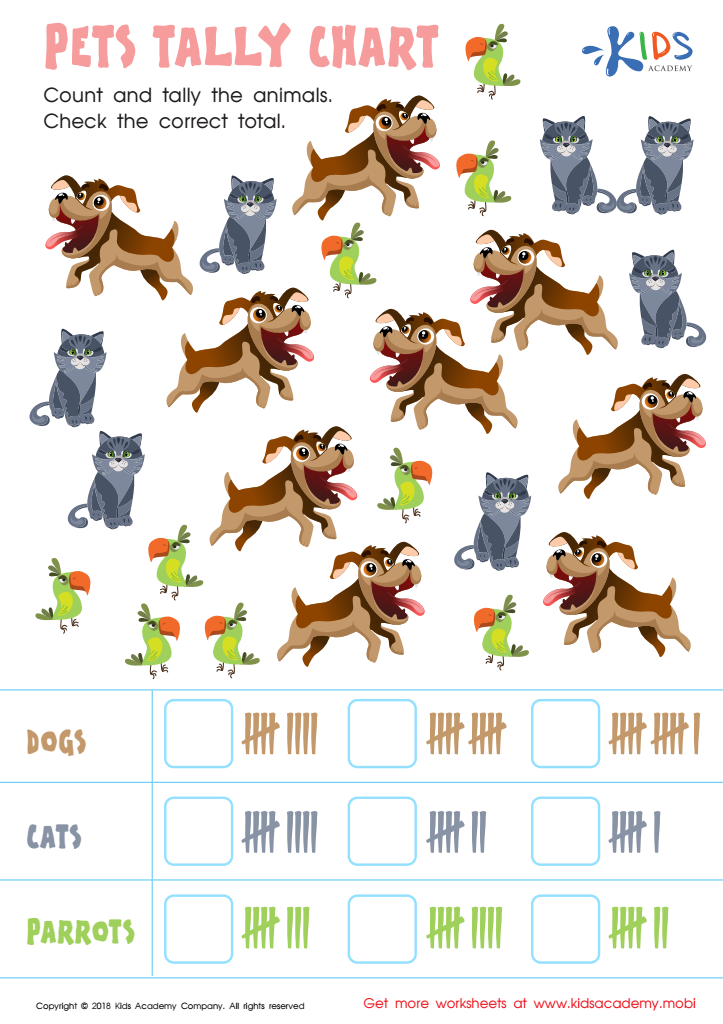

Pets Tally Chart Worksheet
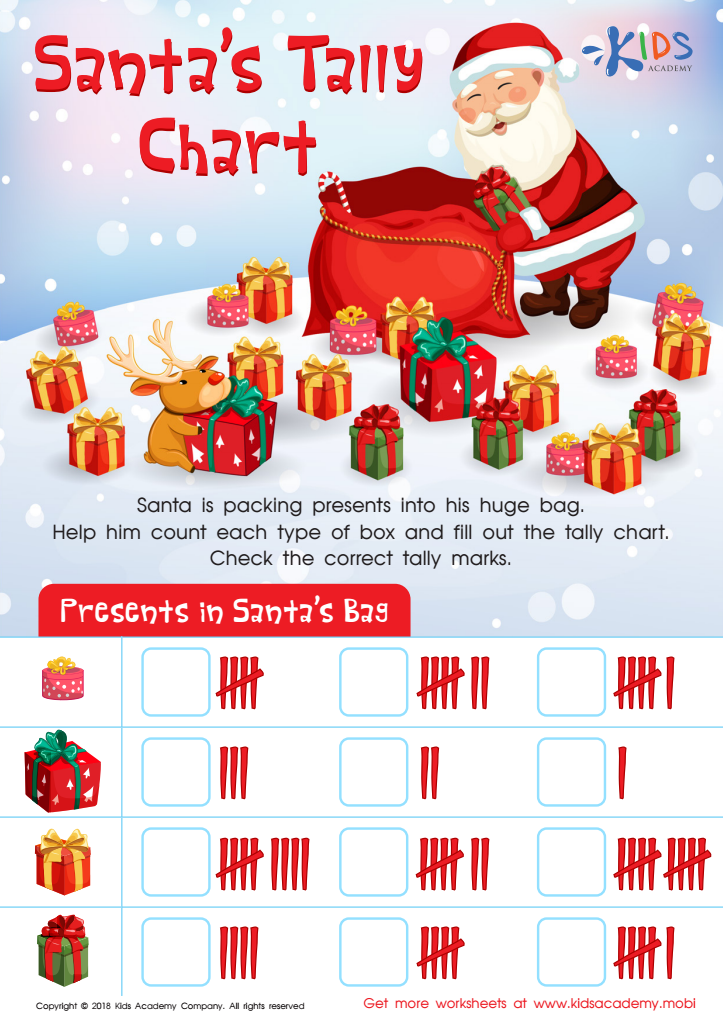

Santa Tally Chart Worksheet
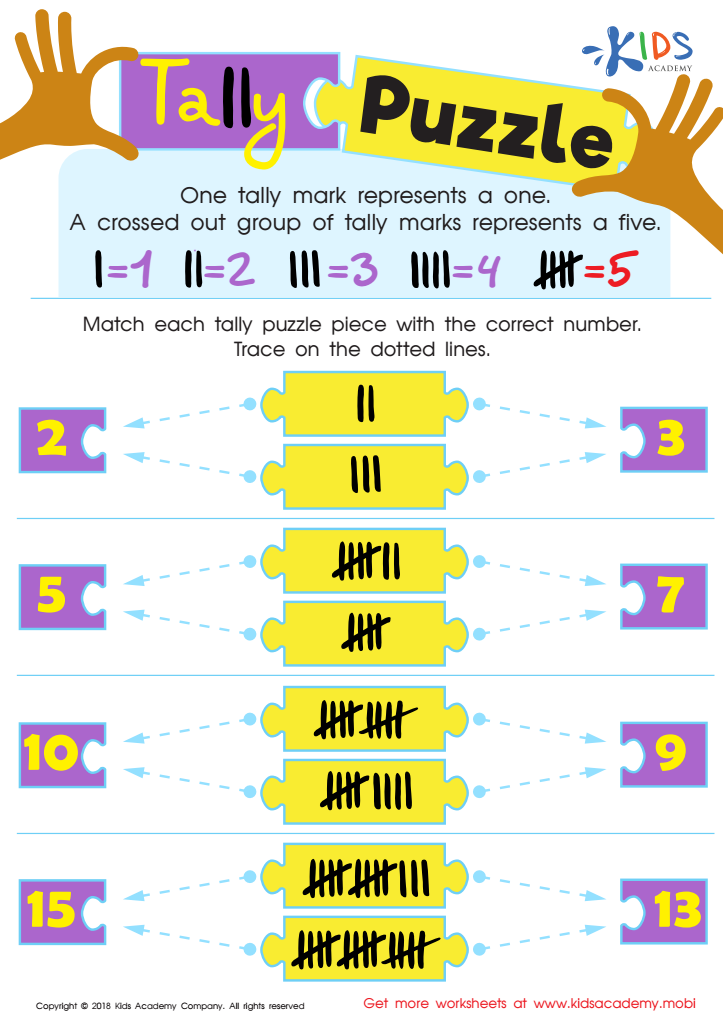

Tally Puzzle Worksheet
Tally marks are one of the simplest and most intuitive ways to teach young children about counting and numeracy. At around 7 years old, children are developing their ability to understand numbers and basic arithmetic, so introducing tally marks can significantly enhance their mathematical skills. Tally marks provide a visual and hands-on method to grasp the concept of grouping and adding numbers, which forms the foundation for more complex mathematical operations.
For parents and teachers, understanding and teaching tally marks is crucial because it offers an engaging way to interact with numbers. It helps children recognize patterns and organize data in a visual form. For instance, kids can easily see that a group of five tally marks (four vertical and one diagonal) simplifies counting and quickly translates to '5'. This visual representation aids memory and helps in avoiding counting errors.
Moreover, using tally marks supports cross-curricular learning, enhancing problem-solving skills and critical thinking. It’s excellent for incorporating into daily activities, such as keeping score in games or tracking daily tasks, making learning both practical and fun.
Ultimately, investing in teaching tally marks can build a strong numerical foundation, foster a positive attitude toward math, and ensure children are better prepared for future mathematical concepts and challenges.
 Assign to My Students
Assign to My Students






